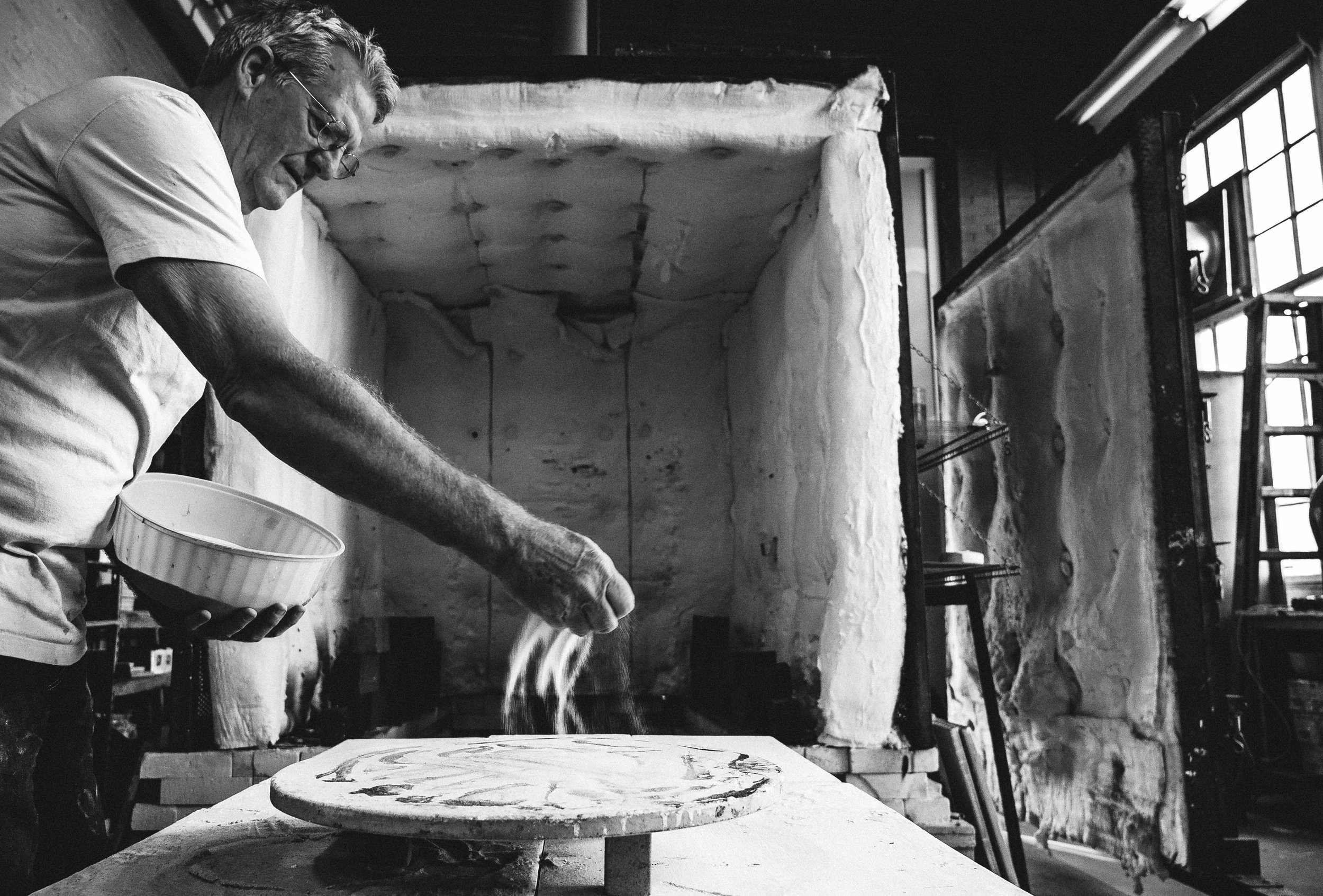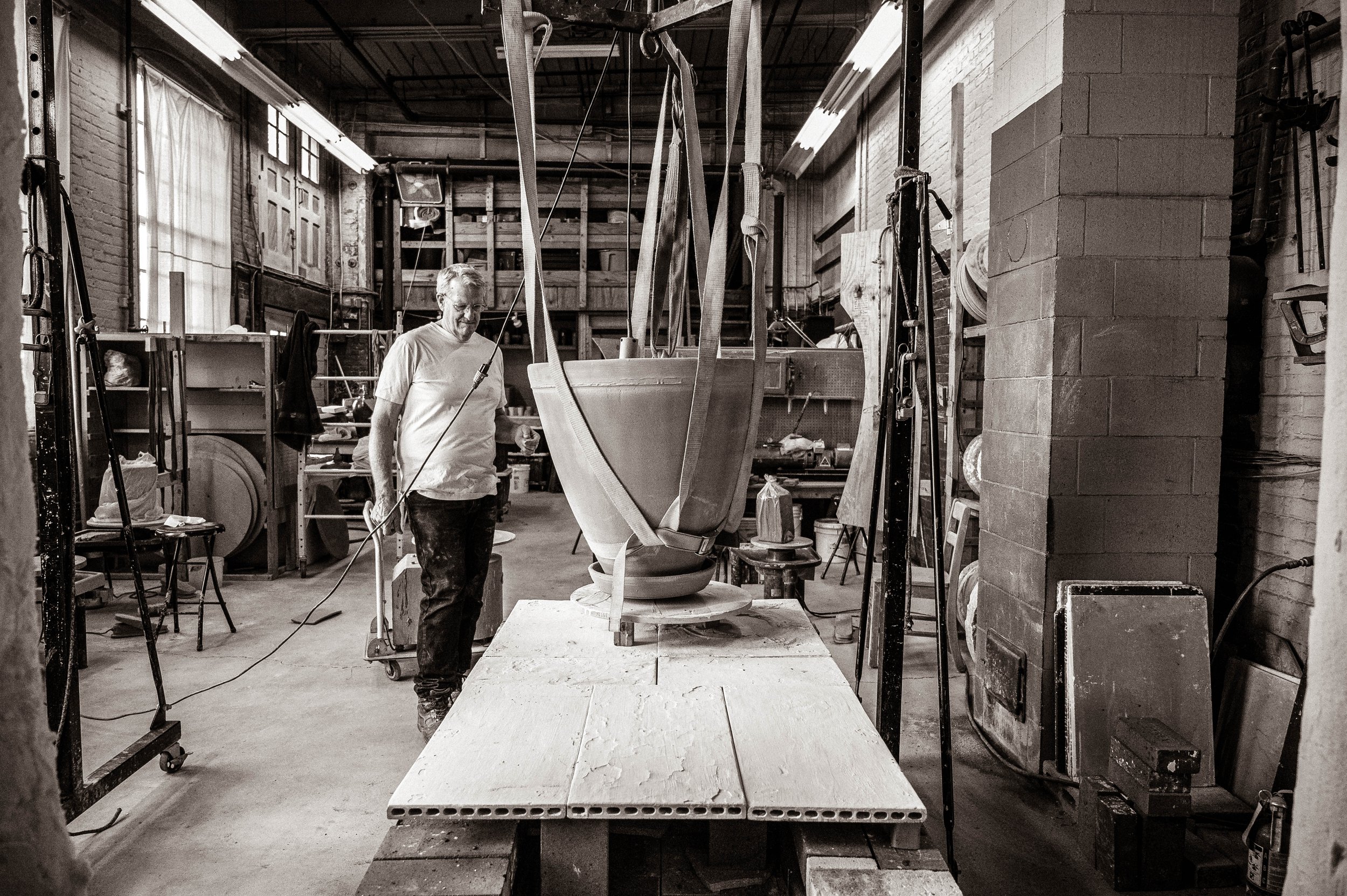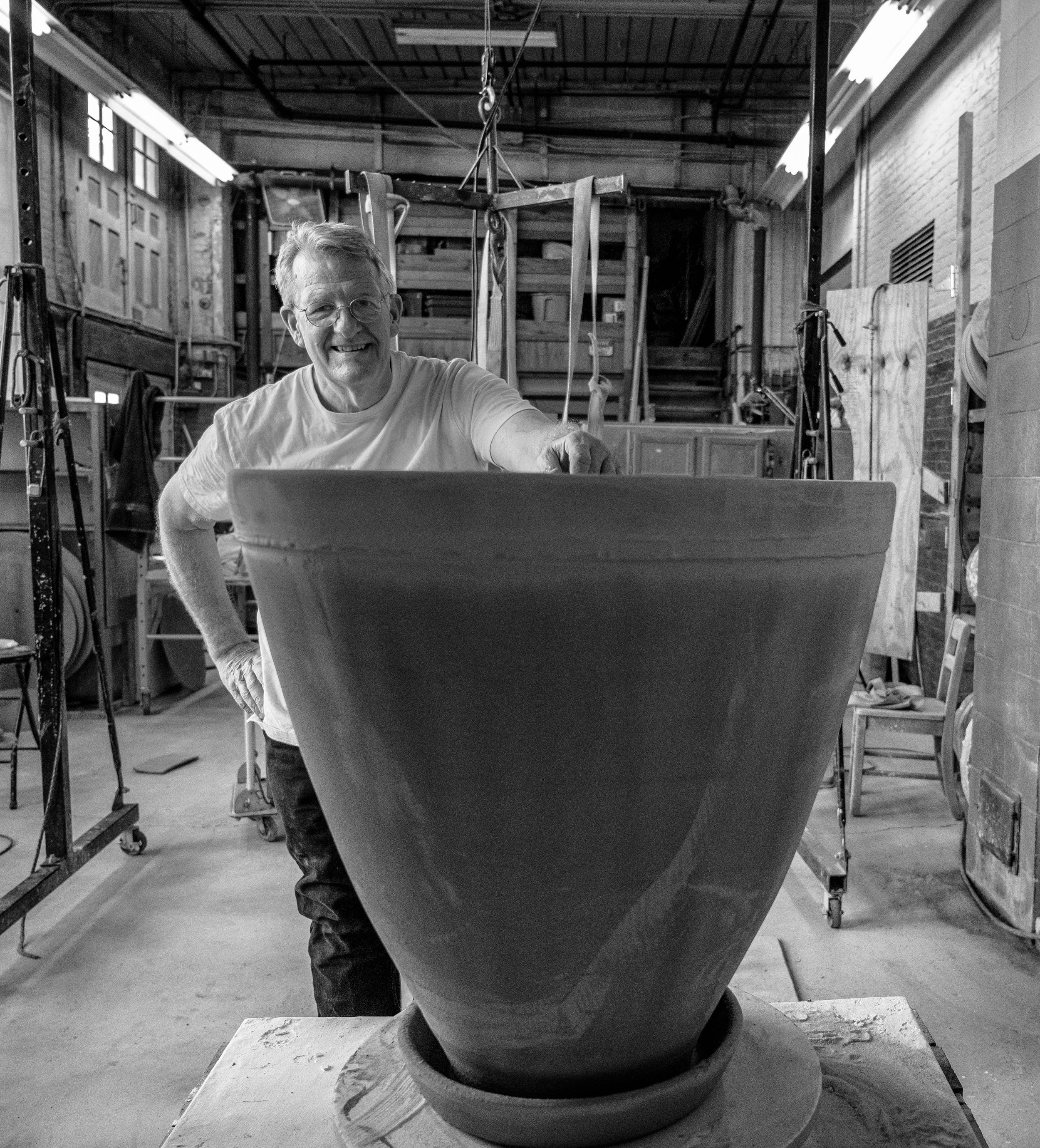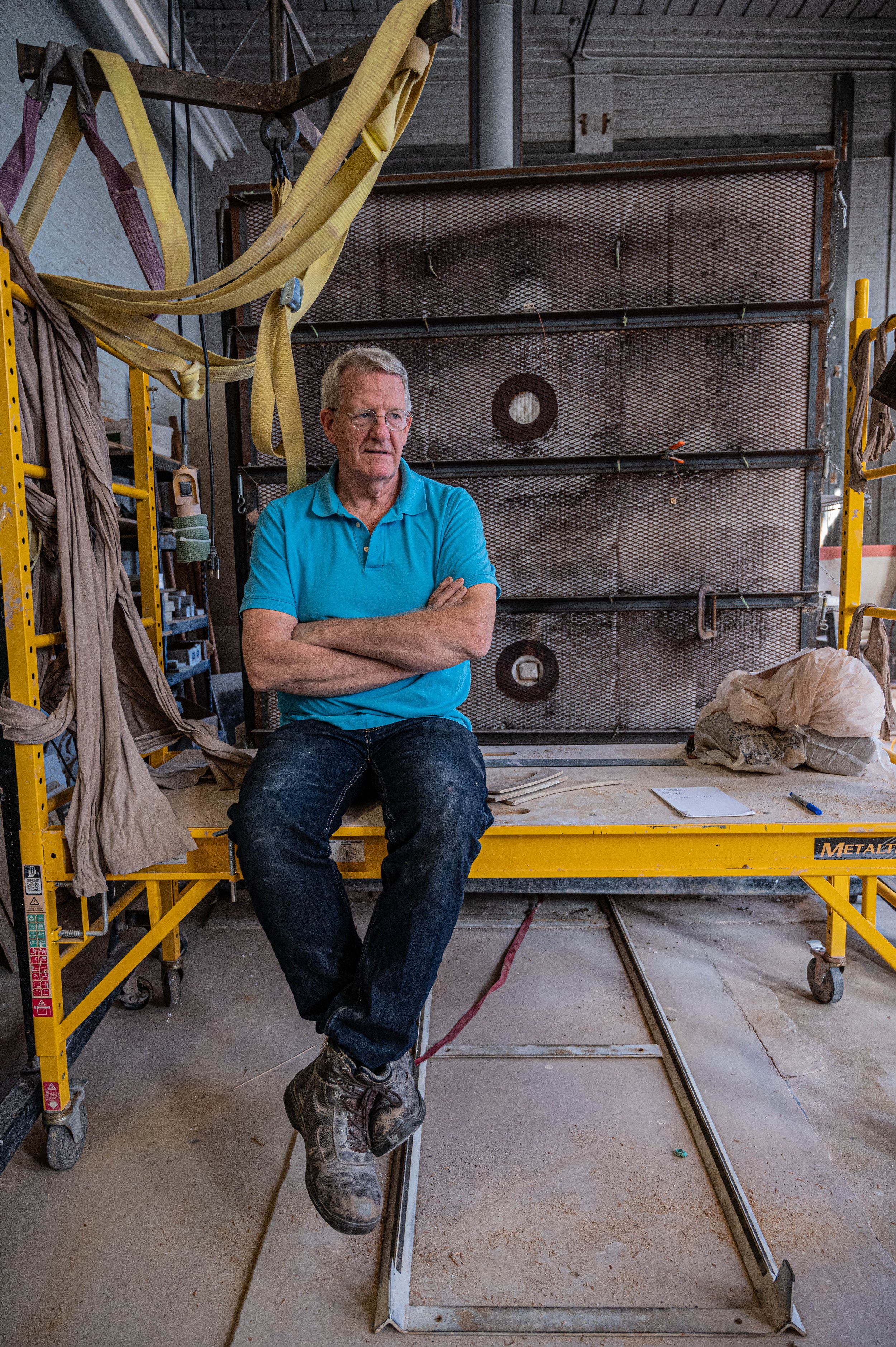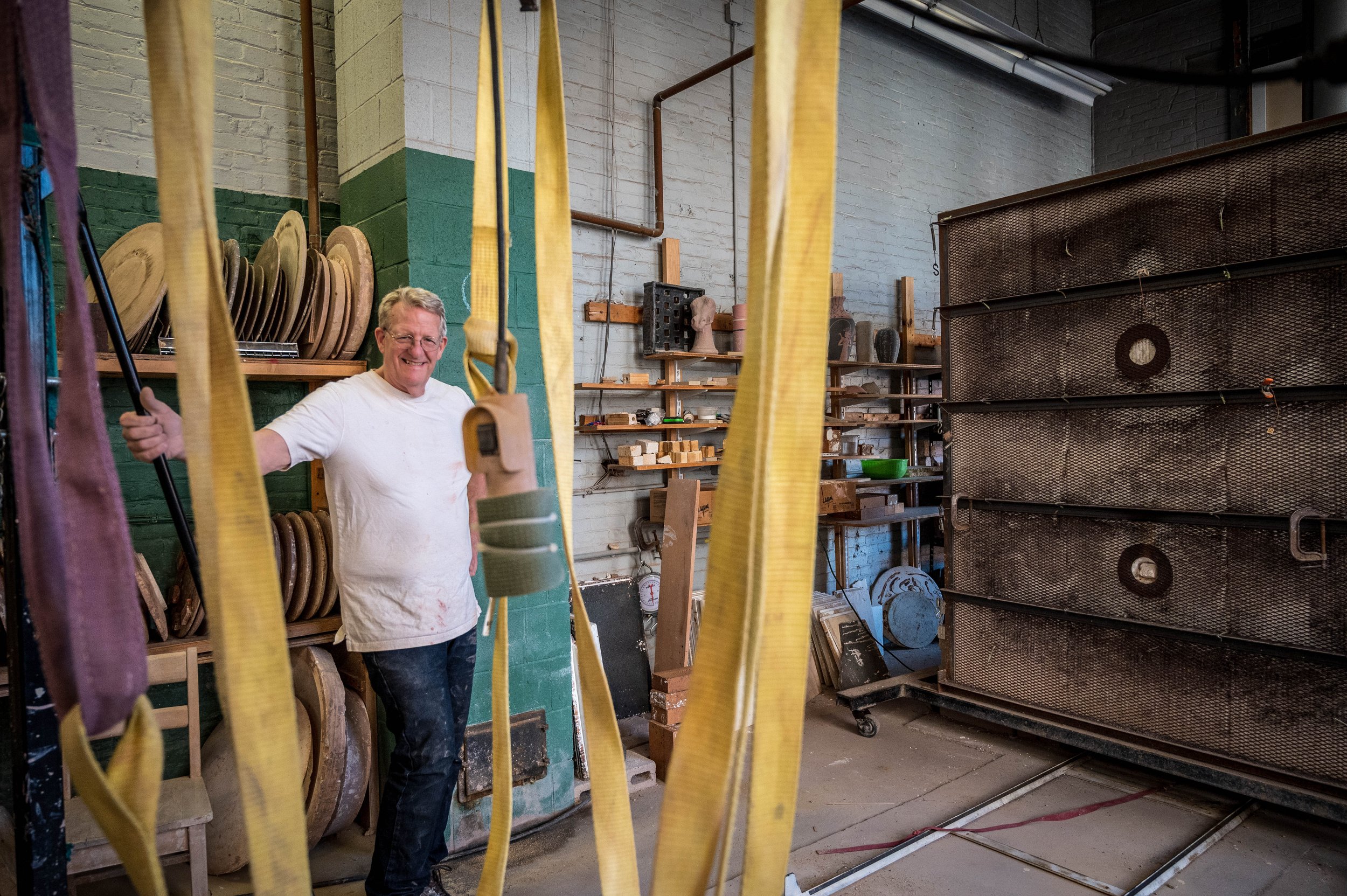Stephen Procter
My creative life has always been about striving to bridge the seen and unseen worlds.
In my previous profession as a classical guitarist, it was the quest for the tone, arc, and underlying emotion that would take me and an audience to a timeless place. Now, as a ceramic artist, my elements are clay, volumes and curves, but the goal is the same: reaching for the eloquent gesture that lifts the veil for a moment..
Over three decades in clay, I’ve been honored to see my work included in leading art fairs, museum shows, and private collections across the U.S. In 2024, a full-page article about my work in The New York Times enabled me to expand my workshop and find new collectors nationwide.
Why Large Vessels?
The animate presence of a good large part has always enchanted me. As physical objects, they evoke a visceral response and impart gravity to the spaces they occupy. As beings, they invoke and emanate beneficent presence. My artistic practice is an investigation—a quest to understand the mysteries of scale, curve, and volume — and how it is that they move and feed us.
Through years of experimentation, research, and countless failures I gradually developed the techniques and skills that allow me to create the work I make today. The vessels have a quality of presence that comforts, uplifts, and inspires— and that rewards the effort and devotion required to make them.
